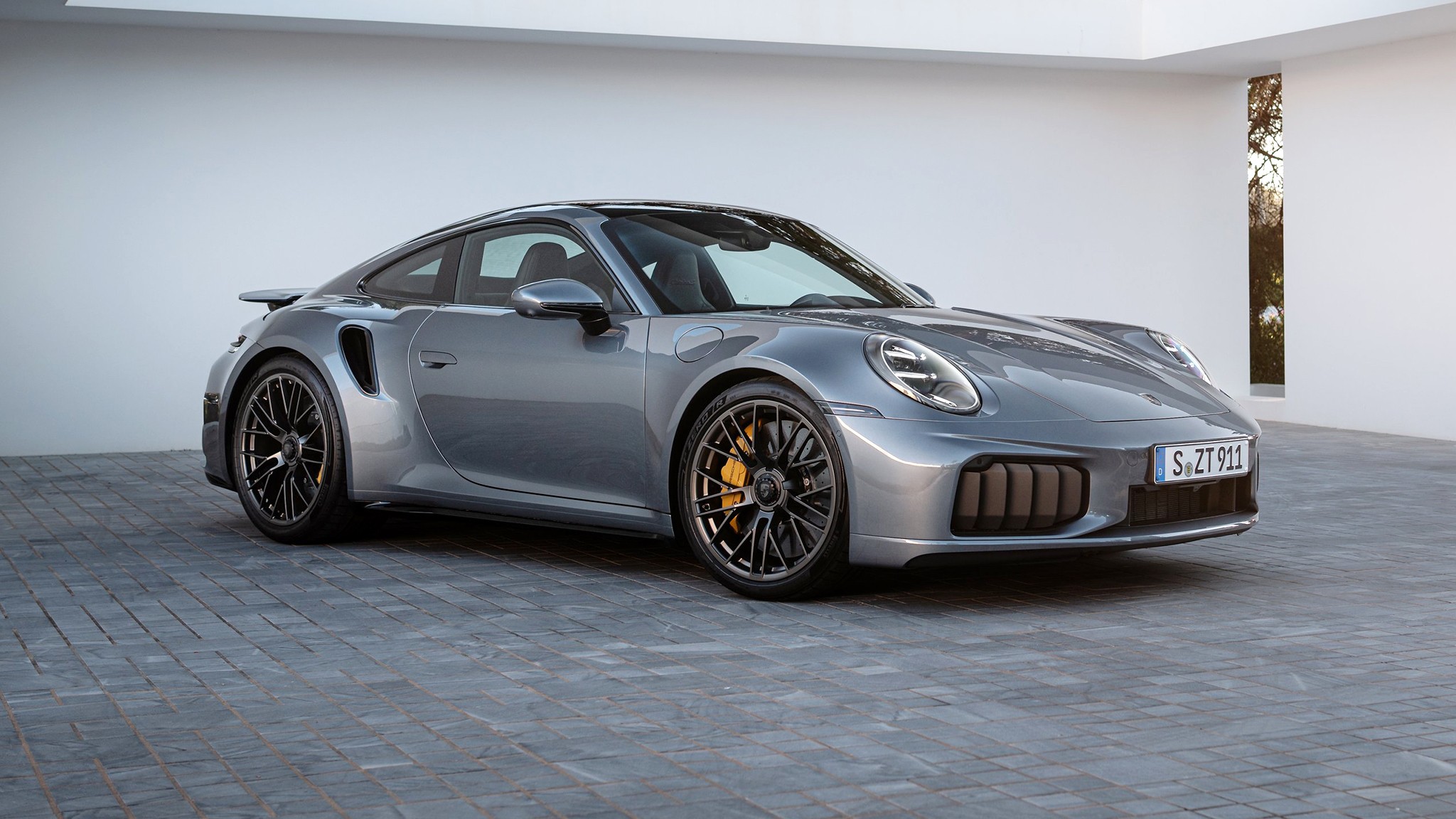2026 Porsche 911 Turbo S: The Hybrid-Powered King of Performance Unveiled
By HomeBrasil |

In a blaze of speed and innovation, Porsche pulled back the curtain on its most powerful production 911 ever—the 2026 Porsche 911 Turbo S—at a star-studded digital world premiere on September 7, 2025, hosted by Hollywood actor and racing driver Patrick Dempsey. Showcased at the IAA Mobility show in Munich, this flagship sports car introduces a groundbreaking T-Hybrid powertrain, churning out a staggering 701 horsepower while blending track-ready performance with everyday usability. With a 0-60 mph sprint of just 2.4 seconds and a starting price of $272,650, it’s a bold leap forward for the iconic 911 lineup. But with rivals pushing boundaries in the luxury performance space, does it stand alone? Join us as we unpack the Turbo S’s electrified edge and explore market alternatives that could tempt even the most die-hard Porsche fans.
Inside the Turbo S’s High-Octane Reveal
The 2026 Porsche 911 Turbo S isn’t just another update—it’s a seismic shift for a model that’s long defined automotive excellence. Unveiled digitally with Dempsey guiding viewers through Porsche’s Weissach development center, the event featured insights from sports car boss Frank Moser, test driver Jörg Bergmeister, and tech YouTuber Jason Fenske from Engineering Explained. From wind tunnel testing to engine tuning, the premiere highlighted Porsche’s meticulous approach to crafting a hybrid that doesn’t compromise on thrill.
The Turbo S’s debut at IAA Mobility’s Open Space in Munich’s Wittelsbacherplatz from September 9 showcased its sleek design and raw power to the public. Available as a coupe (starting at $272,650) or Cabriolet ($286,650), it’s the first Turbo S to embrace hybridization, using two electric turbochargers and a 1.9-kWh battery to boost its 3.6-liter flat-six engine. This isn’t just about numbers—though 701 hp and 590 lb-ft of torque are jaw-dropping—it’s about redefining what a 911 can be in an era leaning toward electrification. Yet, its hefty price and 180-pound weight gain spark questions: does it deliver enough to justify the cost, or are there competitors worth a look?
A Hybrid Heart with Unmatched Power
The core of the 2026 Turbo S is its T-Hybrid system, a leap beyond the single e-turbo setup in the 911 GTS. Dual electric turbochargers eliminate lag, delivering instant response across a wide 2,300-6,000 rpm torque band. Paired with an eight-speed dual-clutch transmission featuring an integrated electric motor, the system pushes 61 hp more than its predecessor, hitting 60 mph in a blistering 2.4 seconds—two-tenths quicker than before—and a top speed of 200 mph. On the Nürburgring, it shaved 14 seconds off the previous model’s lap time, clocking 7:03.92, a testament to its agility despite the added weight.
Porsche didn’t stop at power. Wider 325/30 ZR 21 rear tires, larger ceramic composite brakes (with 20 mm bigger rear discs), and an electrohydraulic Porsche Dynamic Chassis Control system enhance handling precision. Active aerodynamics, including a front diffuser and adaptive rear wing, cut drag by up to 10 percent, per Porsche’s claims. Fuel economy estimates hover around 14/20/16 mpg (city/highway/combined), giving a 266-mile range—not stellar, but forgivable for a car this quick. As one enthusiast put it online, “It’s like Porsche took a scalpel to physics itself.” Yet, the hybrid’s complexity might raise reliability concerns for some.
Design That Screams Performance
Visually, the Turbo S commands attention with its wider stance—two inches broader than a standard Carrera—and a redesigned rear fascia with oval titanium exhausts. The exclusive Turbonite gray finish on trim pieces adds a distinctive flair, especially over a dark gray paint job. Vertical front air intakes and a tilting rear wing optimize airflow, while subtle tweaks like new brake pads and a faster front axle lift ensure practicality without sacrificing style.
Inside, the cabin blends luxury with purpose. Carbon fiber accents, Turbonite stitching, and 18-way sport seats create a driver-focused cockpit, while the Sport Chrono package and HD Matrix LED headlights come standard. The coupe defaults to two seats, with rear seats optional at no cost; the Cabriolet includes them standard. Customization options like carbon-fiber wiper arms (saving a pound) and a Porsche Design watch with matching wheel-inspired rotors push builds past $300,000, catering to those who see their car as an extension of their personality.
Why This 911 Stands Out
The Turbo S isn’t just about raw speed—it’s a statement of Porsche’s engineering prowess. As MotorTrend notes, it feels as quick as the 1,000-hp Taycan Turbo GT from the passenger seat, a remarkable feat for a gas-electric hybrid. Its ability to balance track ferocity with road-trip comfort sets it apart in a niche where daily usability often takes a backseat. The hybrid tech also signals Porsche’s commitment to performance in a greener future, sidestepping full electrification while meeting stricter emissions rules. For 38 percent of 911 buyers who are repeat owners, this blend of heritage and innovation is catnip.
But it’s not flawless. The $272,650 starting price (plus potential tariffs) is steep, and the 3,850-pound curb weight—180 pounds heavier than before—might dull the razor-sharp feel some expect. As one X user quipped, “It’s a beast, but at that price, I’d want wings.” This leads us to explore whether rivals can match or surpass this flagship’s allure.
Competitive Alternatives to Consider
To put the Turbo S in context, let’s look at the luxury performance market through expert insights. The 2025 BMW M4 Competition xDrive offers 523 hp and a 3.4-second 0-60 mph time for around $90,000, with all-wheel drive and sharp handling that rivals Porsche’s precision, per Car and Driver. The Mercedes-AMG C63 S E Performance, a plug-in hybrid with 671 hp, starts near $85,000 and hits 60 mph in 3.3 seconds, blending efficiency (up to 20 miles electric range) with brute force. For a closer price match, the Aston Martin Vantage delivers 656 hp and a 3.4-second sprint for about $200,000, offering exotic styling and a bespoke feel.
These alternatives shine in specific areas: the M4 for value, the C63 for hybrid efficiency (estimated 25 mpg combined), and the Vantage for exclusivity. Posts on X highlight the M4’s aftermarket tuning potential as a draw, while the C63’s electric range appeals to eco-conscious speedsters. Before committing, check incentives—BMW and Mercedes often offer lease deals that shave thousands off the sticker price. Sites like Edmunds or AutoExpress can help you compare real-world costs and features.
Rev Up for the Future
The 2026 Porsche 911 Turbo S, with its electrified 701-hp heart and track-honed agility, redefines what a flagship 911 can be. Unveiled with flair by Patrick Dempsey and backed by Porsche’s engineering legacy, it’s a thrilling blend of power, style, and innovation that’s ready to dominate roads and racetracks alike. Yet, its premium price and added weight invite scrutiny, especially with rivals like the BMW M4, Mercedes-AMG C63, and Aston Martin Vantage offering compelling alternatives at various price points.
Ready to chase the Turbo S dream? Visit Porsche dealers in spring 2026 for a test drive, or explore competitors for a potentially better fit. Drop your thoughts below: Is the Turbo S worth its hefty tag, or are you eyeing a rival? Here’s to finding the ride that sets your pulse racing!




